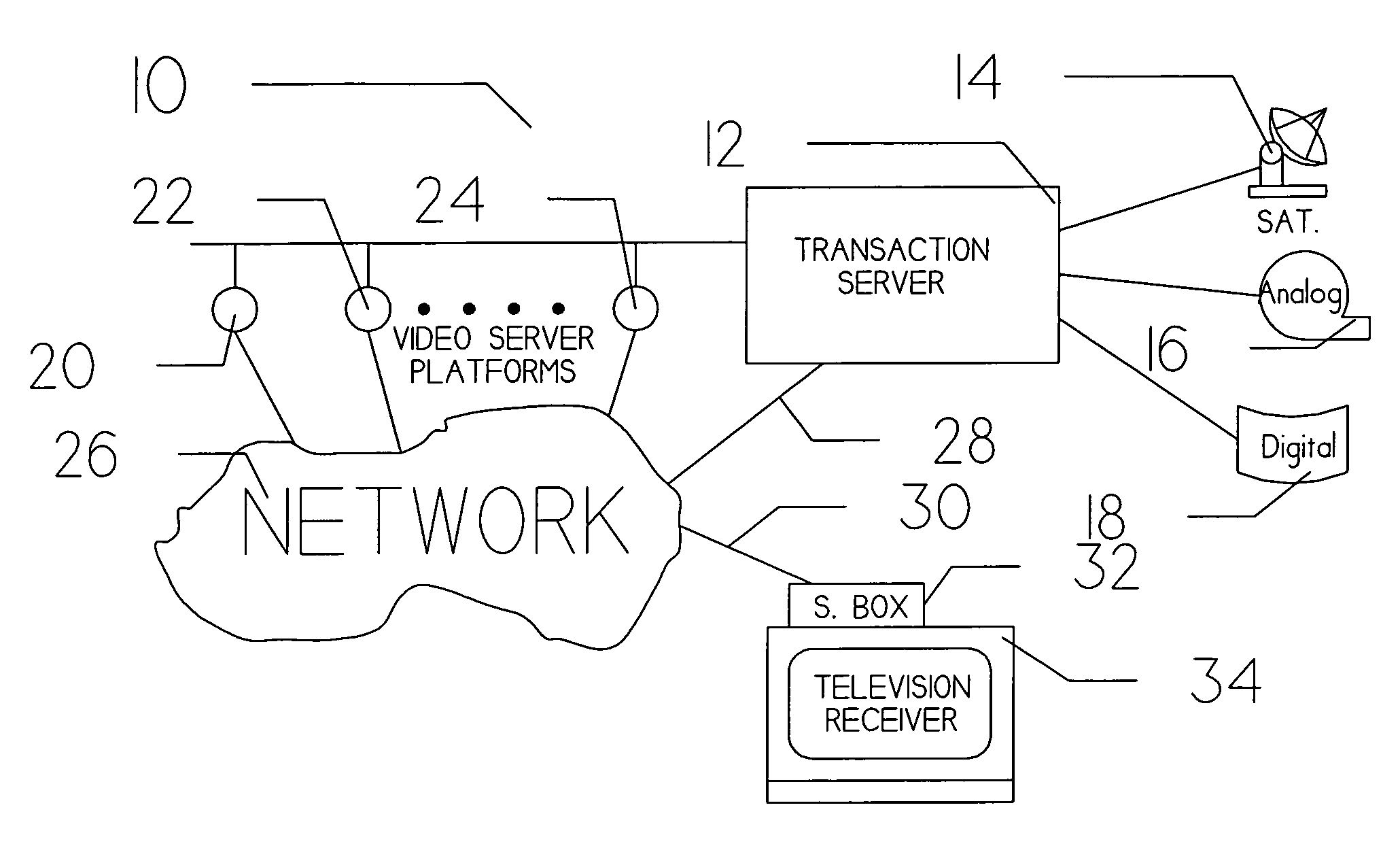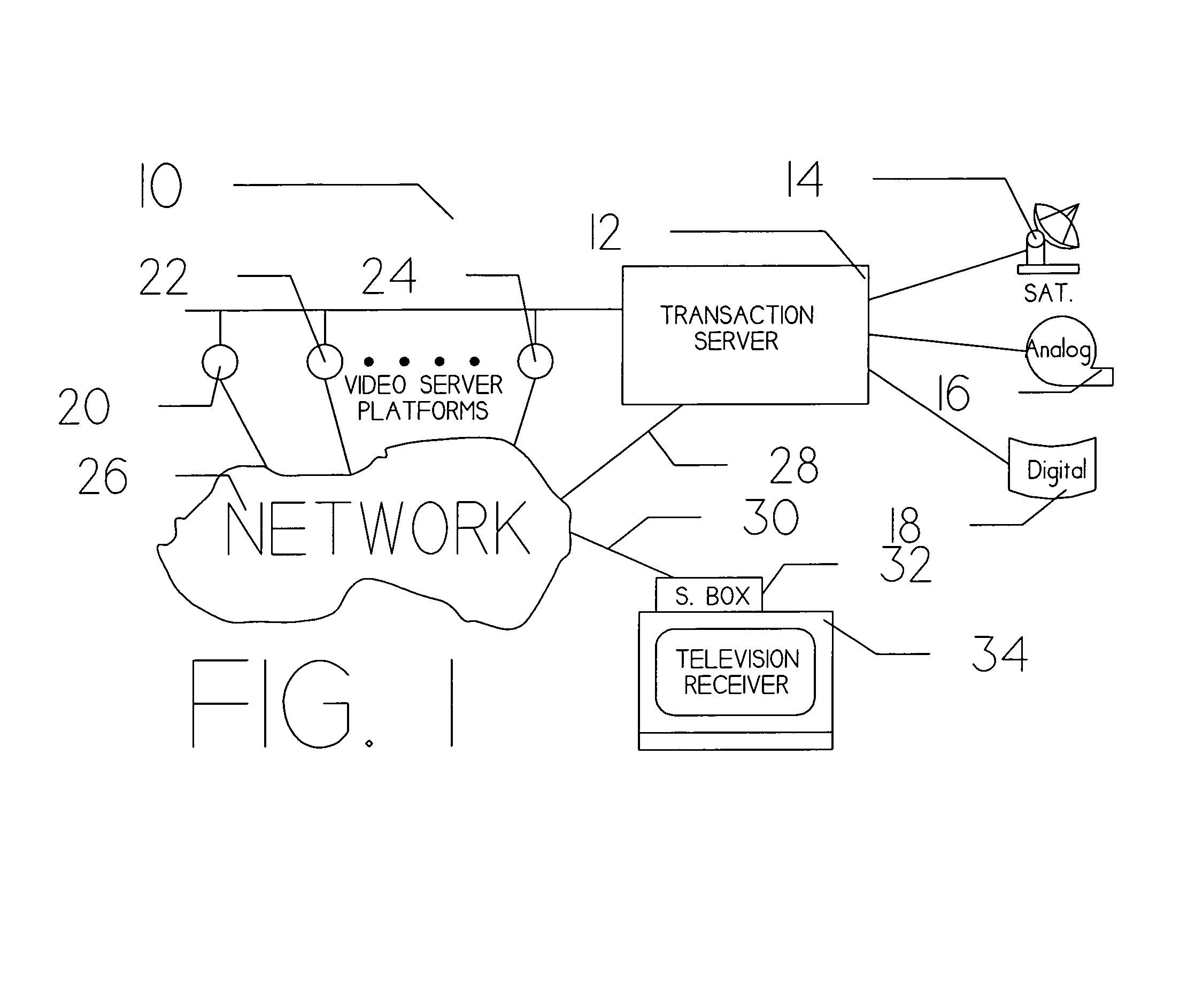Set top network protocol
a network protocol and network protocol technology, applied in the field of digital data transmission of video information, can solve the problems of user programming being missed, most expensive cable television channels currently available, programming provided in the “broadcast” mode, etc., and achieve the effect of convenient handling
- Summary
- Abstract
- Description
- Claims
- Application Information
AI Technical Summary
Benefits of technology
Problems solved by technology
Method used
Image
Examples
Embodiment Construction
[0045]FIG. 1 is a schematic diagram 10 showing the overall video on demand system of the present invention. A subscribing user (not shown) is positioned adjacent standard television receiver 34. Through this television receiver, the user is capable of viewing video programming material transferred to his location via coaxial cable 30 from network 26 in the fashion currently known in the cable television industry. The interface between coaxial cable 30 and standard television receiver 34 is provided by set top subscriber box 32, which provides the conversion between MPEG-2 digitized video format and the analog video signal required by television receiver 34.
[0046]In many respects, set top subscriber box 32 is similar to the set top subscriber boxes utilized with existing cable television systems with the slight functional differences described in more detail below. The basic reason for these slight differences is to permit a subscribing user to communicate with transaction server 12 ...
PUM
 Login to View More
Login to View More Abstract
Description
Claims
Application Information
 Login to View More
Login to View More - R&D
- Intellectual Property
- Life Sciences
- Materials
- Tech Scout
- Unparalleled Data Quality
- Higher Quality Content
- 60% Fewer Hallucinations
Browse by: Latest US Patents, China's latest patents, Technical Efficacy Thesaurus, Application Domain, Technology Topic, Popular Technical Reports.
© 2025 PatSnap. All rights reserved.Legal|Privacy policy|Modern Slavery Act Transparency Statement|Sitemap|About US| Contact US: help@patsnap.com



